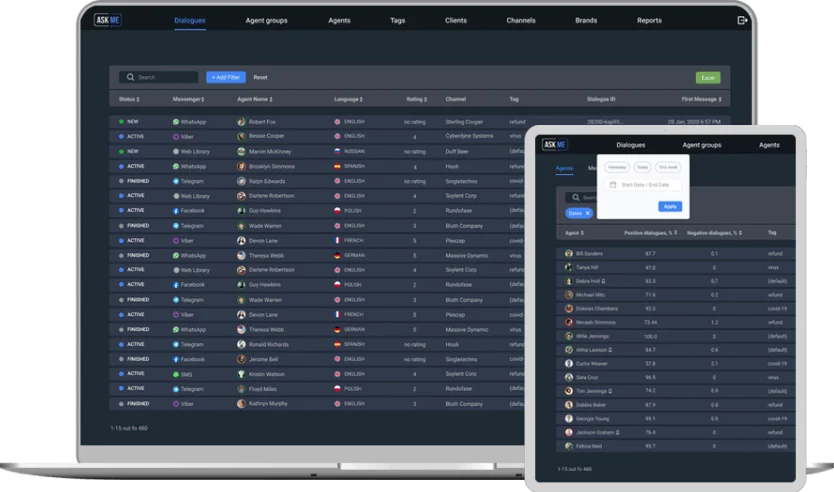AI-enabled energy management systems monitor energy consumption in real-time, identifying opportunities for optimizing and reducing energy waste. By examining data from various sources, including utility meters and equipment sensors, AI may offer energy-saving tactics, resulting in lower operational costs and a smaller environmental impact. Machine learning solutions can promote inventory planning activities as they are good at dealing with demand forecasting and supply planning.
Autonomous robots and machine learning-powered predictive analytics means companies are able to streamline processes, increase productivity and reduce the damage done to the environment in many new ways. Generative design uses machine learning algorithms to mimic an engineer’s approach to design. With this method, manufacturers quickly generate thousands of design options for one product.
See the Real-World Impact
AI can fast-track that knowledge transfer through programs that serve future employees making complicated decisions, like choosing the right combination of materials for a specific application. In fact, generative AI will produce between $170 billion and $290 billion in value for the advanced manufacturing industry alone, according to new data from McKinsey & Company. Across all industries, McKinsey says the technology will add between $2.6 trillion and $4.4 trillion in value.
- It can help to increase efficiency, reduce costs, and improve product quality.
- Design engineers in the manufacturing industry can use this method to create a wide selection of design options for new products they want to create and then pick and choose the best ones to put into production.
- This allows manufacturers to anticipate when equipment might fail and perform maintenance tasks before a breakdown occurs.
- Predictive maintenance enabled by AI allows factories to boost productivity while lowering repair bills.
- Next, the agent “plays the scheduling game” millions of times with different types of scenarios.
- To reap the benefits of ai in manufacturing, it is essential to incorporate AI as soon as possible.
- This enables manufacturers to proactively address potential defects and take corrective actions before they impact the final product quality.
People maintain control of the process but don’t necessarily work in the environment. This frees up vital manufacturing resources and personnel to focus on innovation—creating new ways of designing and manufacturing components—rather than repetitive work, which can be automated. AI can be also used to optimize manufacturing processes and to make those processes more flexible and reconfigurable. Current demand can determine factory floor layout and generate a process, which can also be done for future demand. That analysis then determines whether is it better to have fewer large additive machines or lots of smaller machines, which might cost less and be diverted to other projects when demand slows.
The State of Design & Make: Surviving Change Starts With Digital Maturity
A maintenance companion, which helps shop floor personnel with maintenance tasks by digitizing paper instruction manuals and using AI to provide step-by-step, real-time instructions based on the problem at hand. Continuous operations, such as helping plant floor personnel quickly identify a particular machine that is operating outside of its preferred boundaries. This would allow for real-time adjustments to prevent downtime or quality issues. Robotics, as well as additive manufacturing—better known as 3D printing—impact the industry in powerful ways, too. For instance, in car assembly, robots protect workers from welding and painting fumes, loud stamping press noises, and even injuries. 3D printing—the construction of a three-dimensional object from a digital model—on the other hand, is now poised to transform nearly every industry, from healthcare and manufacturing, to food, steel, and plastic.

From predictive maintenance to personalized production, AI’s transformative influence is undeniable, propelling factories into the future. Some of your most repetitive tasks on the assembly line are ripe for automation, but with AI-driven robots, those processes learn to run even smoother over time. Design engineers in the manufacturing industry can use this method to create a wide selection of design options for new products they want to create and then pick and choose the best ones to put into production. In this way, it accelerates product development processes while enabling innovation in design.
Generative Design
In addition, engineers can face significant rework on projects from not fully understanding interdependencies across the system. The greatest, most immediate opportunity for AI to add value is in additive manufacturing. Additive processes are primary targets because their products are more expensive and smaller in volume.
3D printing could also completely transform housing development by automating the design and construction processes, dramatically lowering costs and increasing access. These technological advances relegated what is AI in manufacturing many tedious, rote, and unsafe tasks to machines instead of people. While they eliminated some jobs, however, they also created new ones—many of which demanded more technologically astute operators.
Factory Automation
For instance, an electronics manufacturer can launch AI-driven robots to automate the assembly of intricate circuit boards, resulting in a significant reduction in errors and a substantial increase in production output. The AI and ML use cases in manufacturing discussed throughout the blog have highlighted how artificial intelligence and machine learning are revolutionizing various aspects of manufacturing. From supply chain management to predictive maintenance, the integration of AI and ML in manufacturing processes has brought significant improvements in efficiency, accuracy, and cost-effectiveness. AI’s influence is profoundly felt in the manufacturing sector, where it is used to automate complex tasks that could be time-consuming, expensive, or humanly impossible. AI use cases in manufacturing include predictive maintenance, automated quality control, and process optimization.

NVIDIA’s AI-powered solutions can also help farmers automate repetitive tasks, including monitoring crops, detecting plant diseases, and analyzing soil conditions. By improving efficiency and productivity, these resources ultimately help farmers increase crop yields and reduce waste, contributing to a more sustainable and profitable agriculture industry. ERP systems and computer-controlled equipment will start integrating it standard into their designs.
Top 15 Big Data Technologies You Need to Know in 2023
Founded in 1993, The Motley Fool is a financial services company dedicated to making the world smarter, happier, and richer. The Motley Fool reaches millions of people every month through our premium investing solutions, free guidance and market analysis on Fool.com, top-rated podcasts, and non-profit The Motley Fool Foundation. While automation is essential in manufacturing, it does not eliminate the need for human workers. Humans have always played an important role in manufacturing enterprises, and they will continue to play an important role. Humans offer unparalleled flexibility to quickly adapt and have creative abilities to handle new challenges. The integration of metaverse technology into the manufacturing sector has the potential to revolutionize the way companies operate, providing new opportunities for optimization, innovation, and growth.
After decades of collecting information, companies are often data rich but insights poor, making it almost impossible to navigate the millions of records of structured and unstructured data to find relevant information. Engineers are often left relying on their previous experience, talking to other experts, and searching through piles of data to find relevant information. For critical issues, this high-stakes scavenger hunt is stressful at best and
often leads to suboptimal outcomes. These AI applications could change the business case that determines whether a factory focuses on one captive process or takes on multiple products or projects.
Quality Control and Defect Detection
The holidays can be a turbulent time of year for many businesses, especially those in manufacturing that experience high levels of demand volatility due to seasonal fluctuations. As customers seek the best deals and compare prices across different retailers, it is… This blog will explore the different types of AI and how they can be used in the manufacturing industry. We will also discuss the potential benefits of AI for manufacturing companies and some of the AI use cases in the manufacturing industry.
Best Practices and Potential Pitfalls
For example, there is a high probability that the word “tree” follows the word “oak.” What makes AI so different from today’s programming is its reliance on those probabilities. Without AI, “oak tree” would only appear if you specifically told the computer that whenever “oak” comes up, “tree” should follow. It will be difficult for manufacturing executives to capture AI value if they’re unclear about what the technology is. And while you won’t need to understand it at the level of, say, a developer, having a grasp on the underlying processes can go a long way. Some examples of this in practice include Pepsi and Colgate, which both use technology designed by AI startup Augury to detect problems with manufacturing machinery before they cause breakdowns. Implementing AI in manufacturing facilities is getting popular among manufacturers.
Choose the Right Program
In 2018, we explored the $1 trillion opportunity for artificial intelligence (AI) in industrials.1Michael Chui, Nicolaus Henke, and Mehdi Miremadi, “Most of AI’s business uses will be in two areas,” McKinsey, March 7, 2019. As companies are recovering from the pandemic, research shows that talent, resilience, tech enablement across all areas, and organic growth are their top priorities.2What matters most? He is a part of the Autodesk Industry Futures team and leads the R&D effort for this group. Harris has a background in aerospace, automotive, and materials science with 15 years of experience in this area.
